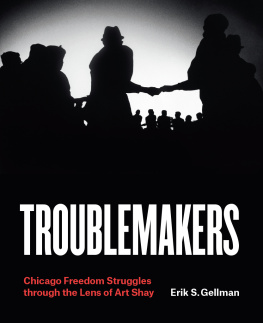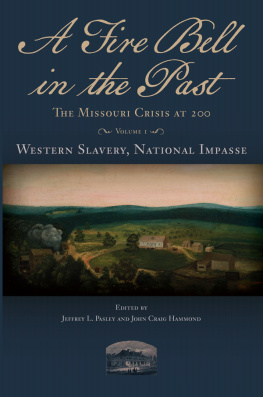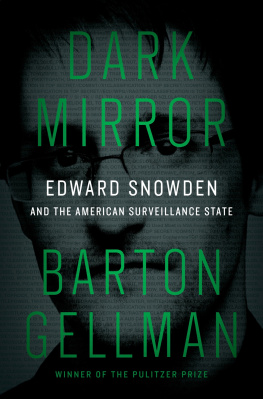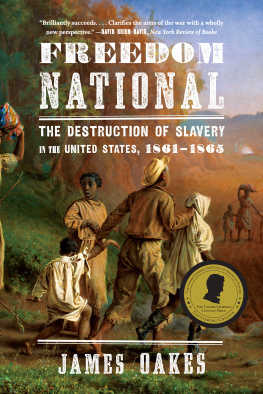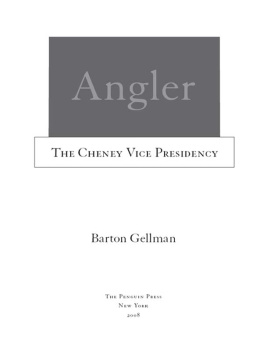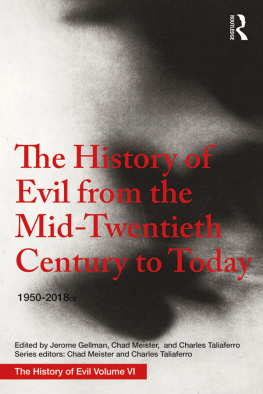PUBLISHED BY LOUISIANA STATE UNIVERSITY PRESS
Copyright 2006 by Louisiana State University Press
All rights reserved
Manufactured in the United States of America
FIRST PRINTING
DESIGNER: Amanda McDonald Scallan
TYPEFACE: New Caledonia
TYPESETTER: G&S Typesetters, Inc.
PRINTER AND BINDER: Edward Brothers, Inc.
Library of Congress Cataloging-in-Publication Data
Gellman, David Nathaniel.
Emancipating New York : the politics of slavery and freedom, 17771827 / David N. Gellman.
p. cm. (Antislavery, abolition, and the Atlantic world)
Includes bibliographical references and index.
ISBN -13: 978-0-8071-3174-9 (cloth : alk. paper)
ISBN -10: 0-8071-3174-1 (cloth : alk. paper)
1. Antislavery movementsNew York (State)History. 2. SlavesEmancipationNew York (State) 3. New York (State)Politics and government17751865. 4. SlaveryNew York (State)History. 5. AbolitionistsNew York (State)Political activity. 6. New York (State)Race relations. I. Title. II. Series.
E445.N56G45 2006
306.3620974709034dc22
2005035621
The paper in this book meets the guidelines for permanence and durability of the Committee on Production Guidelines for Book Longevity of the Council on Library Resources.

ACKNOWLEDGMENTS
As I have imagined finishing this book through the years of research and writing, I have relished the prospect of thanking all those who have supported and encouraged me.
I first began to formulate a notion of what being a historian actually meant while an undergraduate at Amherst College. Thesis advisors N. Gordon Levin and Sean Redding gave me a feel for thinking big. Robert Grosss American Studies seminar on Shayss Rebellion during my senior year led me to realize that we really do not know everything about early America that we need to know. Ever since, Bob has served as a model, friend, and supporter.
This book began life as a dissertation. At Northwestern, T. H. Breen was a tireless advisor who set high standards. James Oakes provided an example of provocative scholarship on slavery. James Campbell offered his insight from close range and from afar; only years later, did I come to appreciate the full value of his nine-page single-spaced commentary faxed from South Africa.
I have experienced phenomenal generosity as I have transformed this project into a book, especially from series editors Richard J. M. Blackett and James Brewer Stewart. Richard offered a valuable critique and issued memorable marching orders over lunch at a conference in California. Jim recruited the manuscript to the series, conveyed his optimism that I would make the necessary changes, and offered important insights. From the first, Jim extended his unique, warm collegiality, making me, a novice then holding a mere term appointment, feel as if I shared something essential with a professor of great scholarly accomplishment.
Fellow historians have offered much thoughtful commentary and provided indications that I might be on the right track. In addition to my dissertation committee and series editors, the manuscript is significantly better for having been read by Dickson D. Bruce Jr., Graham Russell Hodges, and Joanne Pope Melish. Various draft chapters, conference papers, and article manuscripts received helpful responses from W. Andrew Achenbaum, David Brion Davis, Jay Fliegelman, Thelma Wills Foote, Patrick Griffin, John Larson, Tim Lockley, Lynda Morgan, Michael Morrison, Steven Reich, Michael Vorenberg, Alfred Young, and the members of the Newberry Librarys Seminar in Early American History. John Brooke more than once offered welcome encouragement.
Rand Dotson and George Roupe at LSU Press have guided the manuscript to publication. Copyeditor Julia Ridley Smith tightened the prose. Mary Lee Eggart, from LSUs Department of Geography and Anthropology, made three helpful maps. Portions of this book have appeared previously as Pirates, Sugar, Debtors, and Slaves: Political Economy and the Case for Gradual Abolition in New York, Slavery and Abolition 22, no. 2 (2001): 5168; and Race, the Public Sphere, and Abolition in Late Eighteenth-Century New York, Journal of the Early Republic 20 (Winter 2000): 60736. I thank the publishers of Slavery and Abolition (www.tandf.co.uk) and the University of Pennsylvania Press for graciously permitting me to reprint this material.
Daniel Albert and David Quigley belong to a special, hybrid category. Friends to me long before any of us became historians, they have helped sustain this project through their intellect and example, as well as their many thoughtful suggestions. Dan has listened to me complain, even when I was in no position to do so. Dave went so far as to coedit a document reader with me.
The night I arrived in Greencastle for my interview at DePauw University marked the beginning of several rewarding relationships. Yung-chen Chiang, Julia Bruggemann, Rod Clifford, Bob Dewey, John Dittmer, Mac Dixon-Fyle, Glen Kuecker, Tiyi Morris, John Schlotterbeck, Barbara Steinson, Barbara Whiteheadthank you for sharing your lives as teacher-scholars in DePauws Department of History. Special thanks are due also to fellow basement dwellers Mary Giles and Bob Hershberger.
I am grateful to the institutions where I conducted my research and those which have provided the time, money, and facilities to enable me to finish my writing. Northwestern University Library, especially Peter Burtch and his staff in the microform room, provided me with a superb home base. Even short visits to various New York archives turned up research gems. These archives include the Troy Public Library; the New York State Library in Albany; the Adriance Library in Poughkeepsie; the New York Public Library Rare Book and Manuscript Room; the New-York Historical Society; the Haviland Records Room in New York City, which houses the Archives of the New York Yearly MeetingReligious Society of Friends; the Nassau County Historical Society, Hofstra University; and the Long Island Room of the Queensborough Public Library. Travel to these sites was made possible through the generous support of the Society of Colonial Wars, Illinois Chapter. A John and Janice Fisher Time-Out course release at DePauw, funded under the auspices of the Faculty Development Committee, provided time for revisions. More broadly, Dean Neal Abraham and President Robert Bottoms have my deep appreciation for encouraging faculty scholarship. I also thank my students at DePauw for practicing history with me. History major and work-study student Nicholas Gaffney gave several chapters a careful reading as I prepared to make final revisions. Marilyn Culler cheerfully agreed to take my picture.


